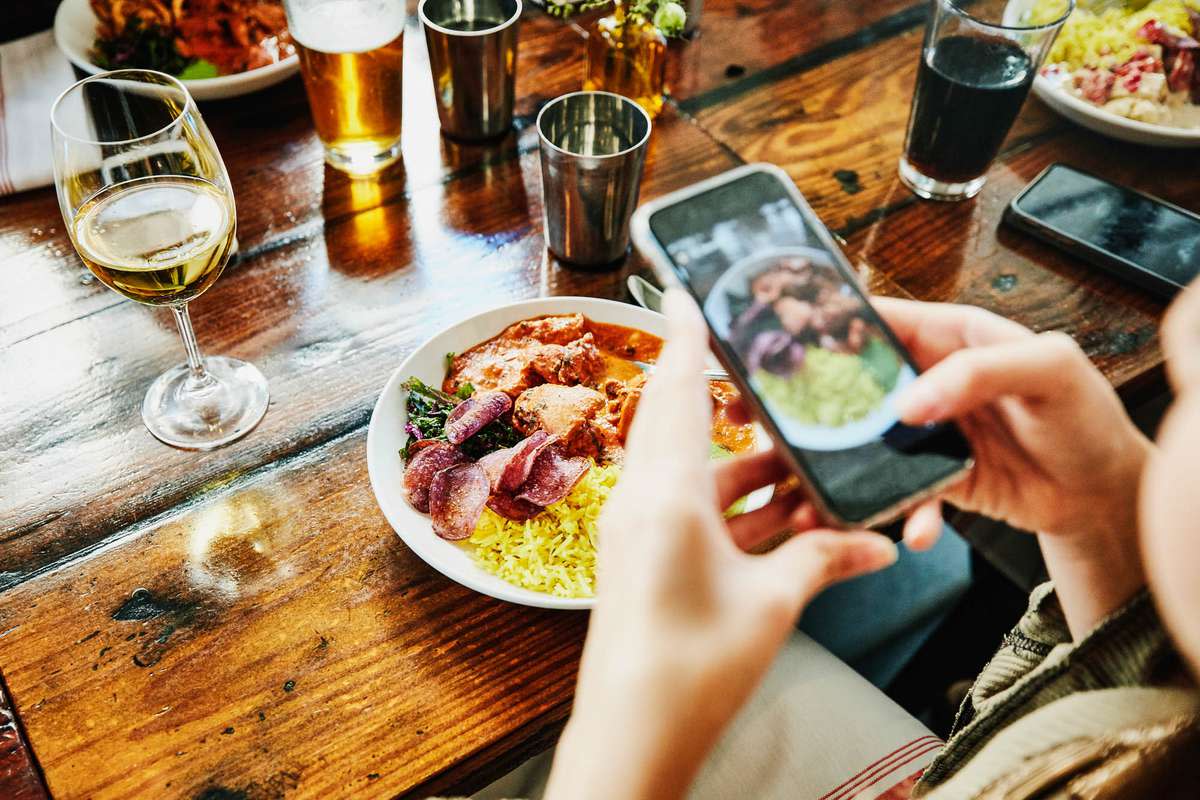The Post-Pandemic Role of Cell Phones at Restaurants

Thomas Barwick / Getty Images
This story is part of The New Rules of Dining Out. Read the rest here.
At Dante, a casual cafe and bar in Manhattan's West Village neighborhood, the scene on a recent Friday night looked similar to any pre-pandemic, early evening dinner service of 2019: tables were filled with people excitedly talking over the constant noise of bartenders shaking, stirring and mixing cocktails behind a long marble bar and the kitchen hummed along plating orders for servers to bring to tables. The only difference is that instead of being presented with menus, new tables and bar guests are instructed to use their smartphones to access a digital copy of the menu and pay their tab on them.
It feels like not too long ago restaurants and guests were at odds, with some restaurants going as far to ban cell phones and publications (including this one) encouraging guests to put their phones away during their meals. Now, the cell phone has taken on a new, central role as a key part of going out to eat, and restaurant owners are rethinking the way they communicate with diners and potential guests as well as how to incorporate this piece of tech into a dining experience.
The most obvious way phones have become a part of the new normal of dining is the proliferation of the QR code, which guests can use to access menus and even place food and drink orders. Short for Quick Response code, the square barcode was invented in 1994, but didn't really take off in the US until the pandemic. According to the National Restaurant Association, half of full-time restaurant operators started using QR codes during the pandemic and while there are security concerns about the technology, most operators agree that the good outweighs the bad.
For Nathalie Hudson, principal at Dante, the QR code has been a welcome addition since it allows the restaurant to make changes to the menu on the fly or update it once something is no longer available. "I do think an actual physical menu is still so much nicer than the QR menu, however, printed menus take a lot more time, money and resources, as they need to be printed and updated daily," she says. In that way there's less worry that guests are getting out of date menus or may order something that is sold out. "You can change QR codes multiple times throughout the evening to ensure that it is constantly up to date with any items that run low."
Phones are also guests' tabs now, with some restaurants using programs that give guests the power to order and close their checks via their cell phone. At Maketto, a casual Asian-inspired restaurant and retail space in Washington, D.C., director of sales Keem Hughley, saw how guests wanted to engage with servers differently. "We're still in the middle of a pandemic so some people want to be left alone while some want more engagement," he explains. Maketto started using Go Tab to offer guests a way "to be in control of their dining experience". Guests are greeted by a server but place their order via their cell phone and can keep their tab open for multiple rounds of drinks or food without waiting for a server, allowing them to pace out their meal. "Our directive for our servers is to greet each table and get a gauge for what they're looking for," Hughley adds.
For Christine Sahadi Whelen, managing partner of Sahadi's in Brooklyn and author of Flavor of the Suns, at first, the idea of phones being incorporated into the dining experience at Sahadi's felt antithetical to the idea of going to a restaurant to connect with others. But since opening she says she's seen technology have the opposite effect. "I was worried people wouldn't engage with one another but they're actually doing it in a really organic way," she says. Whether guests are using a QR code to pull up the menu, creating a story on Instagram about their experience, or snapping a picture of a dish, she finds that they're still creating memories and engaging over dinner in a restaurant, which is exactly the experience she and the team want guests to have. "It's a healthy mix of tech and tradition."
Although most diners are comfortable, some guests still prefer to put their phones away and be presented with a paper menu which most restaurants will still accommodate. "It pains me to see someone being forced to use a QR code if they don't want to," Hughley says. "Our job is not to force you into the future, our job is to make sure you have a really good experience." At Dante, paper menus are available and at Sahadi's, a server will talk through options with guests if they prefer. It's about meeting each guest at their "comfort level with tech" instead of forcing them to hang on to their phones, Whelen says.
And it won't be going anywhere any time soon. "I think QR menus are here to stay due to the ease by which they can be updated and changed," Hudson says. "I think potentially QR codes could become even more fun, perhaps leading to animated or 3D menus." It's all a good thing, and a part of dining for the foreseeable future. But there is one rule owners like Whelen doesn't bend on: "I do want you to turn off your ringer though."
RELATED: Good Restaurant Reservation Etiquette Is More Important Than Ever

